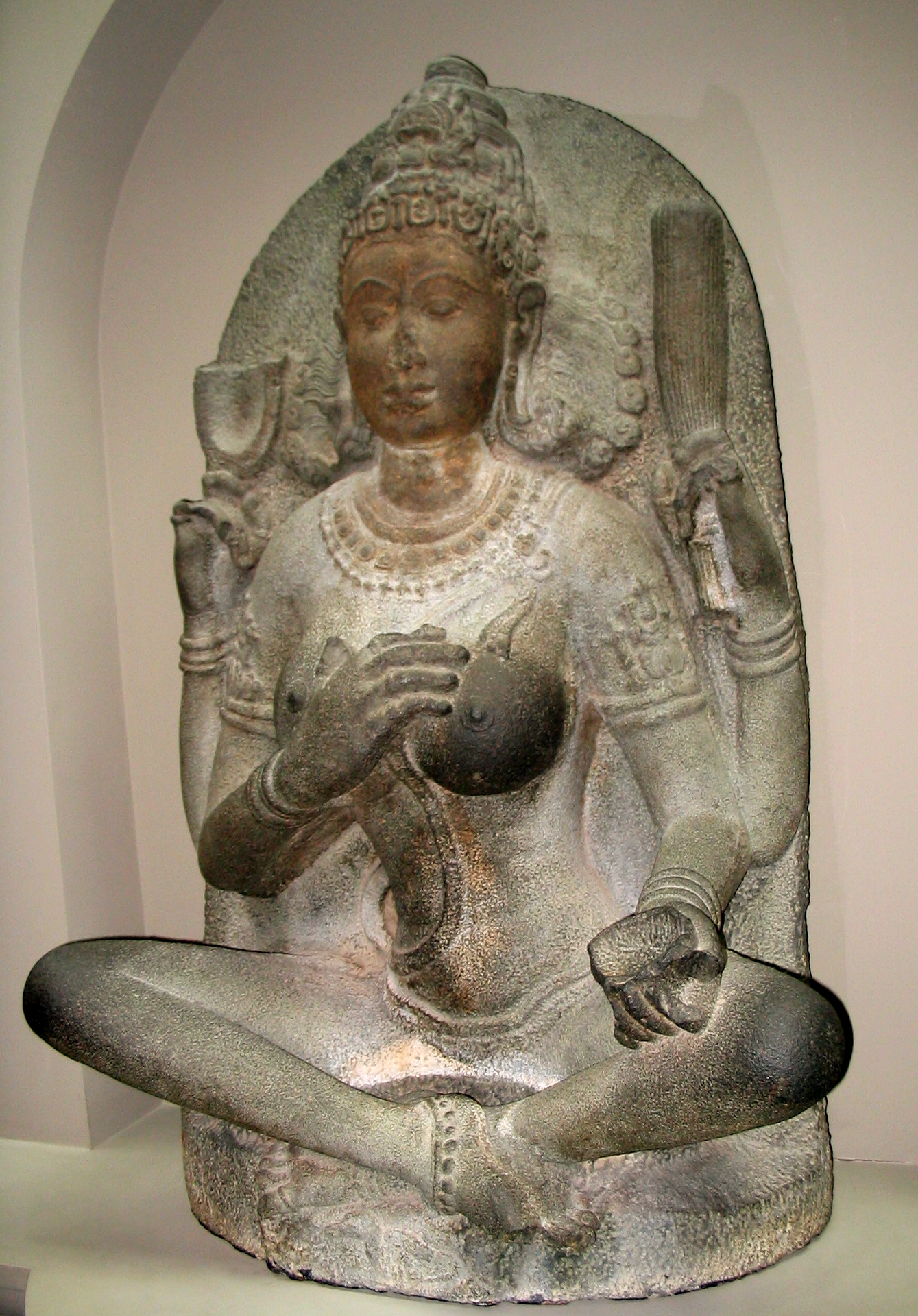|
Shukseb Jetsun Chönyi Zangmo
Shukseb Jetsunma Chönyi Zangmo (1865–1953) was the most well known of the yoginis in the 1900s, and was considered an incarnation of Machig Lapdron. She was the abbess of Shukseb nunnery, and was a Nyingma Nyingma (, ), also referred to as ''Ngangyur'' (, ), is the oldest of the four major schools of Tibetan Buddhism. The Nyingma school was founded by PadmasambhavaClaude Arpi, ''A Glimpse of the History of Tibet'', Dharamsala: Tibet Museum, 2013. ... Tibetan Buddhist teacher. She made the nunnery once again into a center for the special teachings of the Shugseb Kagyu. The nunnery still exists in Tibet today, and in fact is one of its most active nunneries. Family Life as a Chod Practitioner and Wandering Yogini Teachers Students Nunneries References Books and articles #A full story of Shugsep Jetsun’s life is available as “The Story of a Tibetan Yogini: Shungsep icJetsun 1852-1953” prepared by Kim Yeshi and Acharya Tashi Tsering with the assistance o ... [...More Info...] [...Related Items...] OR: [Wikipedia] [Google] [Baidu] |
Yogini
A yogini (Sanskrit: योगिनी, IAST: ) is a female master practitioner of tantra and yoga, as well as a formal term of respect for female Hindu or Buddhist spiritual teachers in the Indian subcontinent, Southeast Asia and Greater Tibet. The term is the feminine Sanskrit word of the masculine '' yogi'', while the term " yogin" is used in neutral, masculine or feminine sense. A yogini, in some contexts, is the sacred feminine force made incarnate, as an aspect of Mahadevi, and revered in the yogini temples of India. These often revere a group of 64 yoginis, and are named as such, but can also have 42 or 81 yoginis. The names of the 64 yoginis vary in different classifications. History According to Indologist and Yoga-Tantra scholar David Gordon White, yoginis are first mentioned in Indian literature in the sixth-century Hindu Agni Purana, with their origins rooted in the Vedic tradition. Their development reflects a synthesis of Vedic and classical Hindu elements. ... [...More Info...] [...Related Items...] OR: [Wikipedia] [Google] [Baidu] |
Nyingma
Nyingma (, ), also referred to as ''Ngangyur'' (, ), is the oldest of the four major schools of Tibetan Buddhism. The Nyingma school was founded by PadmasambhavaClaude Arpi, ''A Glimpse of the History of Tibet'', Dharamsala: Tibet Museum, 2013. as the first translations of Buddhist scriptures from Pali and Sanskrit into Tibetic languages, Tibetan occurred in the eighth century. The establishment of Tibetan Buddhism and the Nyingma tradition is collectively ascribed to Khenpo Shantarakshita, Guru Padmasambhava, and King Trisong Detsen, known as ''Khen Lop Chos Sum'' (The Three: Khenpo, Lopon, Chosgyal). The Nyingma tradition traces its Dzogchen lineage from the Adi-Buddha, first Buddha Samantabhadra to Garab Dorje, and its other lineages from Indian mahasiddhas such as Sri Singha and Jnanasutra. Yeshe Tsogyal recorded the teachings. Other great masters from the founding period include Vimalamitra, Vairotsana, and Buddhaguhya. The Nyingma tradition was physically founded at Samye ... [...More Info...] [...Related Items...] OR: [Wikipedia] [Google] [Baidu] |
Tibetan Buddhists From Tibet
Tibetan may mean: * of, from, or related to Tibet * Tibetan people, an ethnic group * Tibetan language: ** Classical Tibetan, the classical language used also as a contemporary written standard ** Standard Tibetan, the most widely used spoken dialect ** Tibetan pinyin, a method of writing Standard Tibetan in Latin script ** Tibetan script ** any other of the Tibetic languages Tibetan may additionally refer to: Culture * Old Tibetan, an era of Tibetan history * Tibetan art * Music of Tibet * Tibetan rug * Tibetan culture * Tibetan cuisine Religion * Tibetan Buddhism * Tibetan Muslims Other uses * Tibetan alphabet * Tibetan (Unicode block) * Tibetan name * Tibetan calendar * Tibetan Spaniel, a breed of dog * Tibetan Mastiff, a breed of dog See also * Tibet (other) * Tibetan Bells (other) * Traditional Tibetan medicine Traditional Tibetan medicine or Sowa Rigpa is the Tibetan medical system developed in the 8th century under King Trisong Detsen that in ... [...More Info...] [...Related Items...] OR: [Wikipedia] [Google] [Baidu] |
1852 Births
Events January–March * January 14 – President Napoleon III, Louis-Napoléon Bonaparte proclaims a French Constitution of 1852, new constitution for the French Second Republic. * January 15 – Nine men representing various Jewish charitable organizations come together to form what will become Mount Sinai Hospital, New York, Mount Sinai Hospital in New York City. * January 17 – The United Kingdom recognizes the independence of the South African Republic, Transvaal. * February 3 – Battle of Caseros, Argentina: The Argentine provinces of Entre Ríos Province, Entre Rios and Corrientes, allied with Brazil and members of Colorado Party (Uruguay), Colorado Party of Uruguay, defeat Buenos Aires troops under Juan Manuel de Rosas. * February 11 – The first British public toilet for women opens in Bedford Street, London. * February 14 – The Great Ormond Street Hospital for Sick Children, London, admits its first patient. * February 15 – ... [...More Info...] [...Related Items...] OR: [Wikipedia] [Google] [Baidu] |
1953 Deaths
Events January * January 6 – The Asian Socialist Conference opens in Rangoon, Burma. * January 12 – Estonian émigrés found a Estonian government-in-exile, government-in-exile in Oslo. * January 14 ** Marshal Josip Broz Tito is chosen President of Socialist Federal Republic of Yugoslavia, Yugoslavia. ** The Central Intelligence Agency, CIA-sponsored Robertson Panel first meets to discuss the Unidentified flying object, UFO phenomenon. * January 15 ** Georg Dertinger, foreign minister of East Germany, is arrested for spying. ** British security forces in West Germany arrest 7 members of the Naumann Circle, a clandestine Neo-Nazi organization. * January 19 – 71.1% of all television sets in the United States are tuned into ''I Love Lucy'', to watch Lucy give birth to Little Ricky, which is more people than those who tune into Dwight Eisenhower's inauguration the next day. This record is never broken. * January 24 ** Mau Mau Uprising: Rebels in Kenya kill th ... [...More Info...] [...Related Items...] OR: [Wikipedia] [Google] [Baidu] |
Nyingma Lamas
Nyingma (, ), also referred to as ''Ngangyur'' (, ), is the oldest of the four major schools of Tibetan Buddhism. The Nyingma school was founded by PadmasambhavaClaude Arpi, ''A Glimpse of the History of Tibet'', Dharamsala: Tibet Museum, 2013. as the first translations of Buddhist scriptures from Pali and Sanskrit into Tibetan occurred in the eighth century. The establishment of Tibetan Buddhism and the Nyingma tradition is collectively ascribed to Khenpo Shantarakshita, Guru Padmasambhava, and King Trisong Detsen, known as ''Khen Lop Chos Sum'' (The Three: Khenpo, Lopon, Chosgyal). The Nyingma tradition traces its Dzogchen lineage from the first Buddha Samantabhadra to Garab Dorje, and its other lineages from Indian mahasiddhas such as Sri Singha and Jnanasutra. Yeshe Tsogyal recorded the teachings. Other great masters from the founding period include Vimalamitra, Vairotsana, and Buddhaguhya. The Nyingma tradition was physically founded at Samye, the first monastery in ... [...More Info...] [...Related Items...] OR: [Wikipedia] [Google] [Baidu] |
Rinpoches
Rinpoche, also spelled Rimpoche (), is an honorific term used in the Tibetan language. It literally means "precious one", and may refer to a person, place, or thing—like the words "gem" or "jewel" (Sanskrit: ''Ratna''). The word consists of ''rin'' (value), ''po'' (nominalizing suffix) and ''chen'' (big). The word is used in the context of Tibetan Buddhism as a way of showing respect when addressing those recognized as reincarnated, older, respected, notable, learned and/or an accomplished Lamas or teachers of the Dharma. It is also used as an honorific for abbots of Buddhist monasteries. See also * Rinpoches, a partial list of a few spiritual teachers of past and present commonly addressed as ''Rinpoche''. *Tulku, someone who is recognized as the rebirth of a previous practitioner of Tibetan Buddhism. *Mount Kailash is often called in the Tibetan language Tibetan language may refer to: * Lhasa Tibetan or Standard Tibetan, the most widely used spoken dialect * Classical Tibe ... [...More Info...] [...Related Items...] OR: [Wikipedia] [Google] [Baidu] |
Vajrayana And Women
''Vajrayāna'' (; 'vajra vehicle'), also known as Mantrayāna ('mantra vehicle'), Guhyamantrayāna ('secret mantra vehicle'), Tantrayāna ('tantra vehicle'), Tantric Buddhism, and Esoteric Buddhism, is a Mahāyāna Buddhism, Mahāyāna Buddhist tradition that emphasizes Eastern esotericism, esoteric practices and rituals aimed at Sudden awakening, rapid spiritual awakening. Emerging between the 5th and 7th centuries CE in medieval India, Vajrayāna incorporates a Tibetan tantric practice, range of techniques, including the use of mantras (sacred sounds), dhāraṇīs (mnemonic codes), mudrās (symbolic hand gestures), mandalas (spiritual diagrams), and the visualization of Buddhist deities, deities and Buddhahood, Buddhas. These practices are designed to transform ordinary experiences into paths toward Enlightenment in Buddhism, enlightenment, often by engaging with aspects of Taṇhā, desire and Dvesha, aversion in a ritualized context. A distinctive feature of Vajrayāna is ... [...More Info...] [...Related Items...] OR: [Wikipedia] [Google] [Baidu] |





